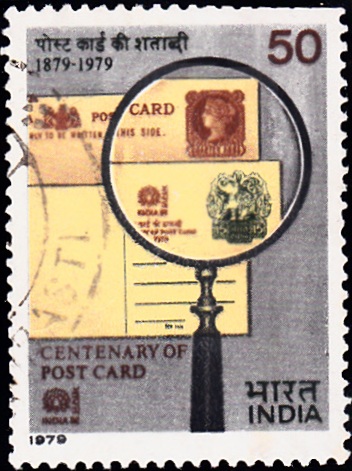
India on Post Card
A commemorative postage stamp on the Centenary of the Indian Postcards :
Issued on Jul 2, 1979
Issued for : The P & T Department proudly hails the centenary of the Post Card Service with the issue of a commemorative postage stamp of 50 paise denomination.
Type : Stamp, Postal Used
Colour : Multicolour
Denomination : 50 Paise
Overall size : 3.91 X 2.90 cms.
Printing size : 3.55 X 2.54 cms.
Perforation : 13 X 13
Watermark : A. P. watermark
Number printed : 30,00,000
Number per issue sheet : 35
Printing process : Photogravure
Designed and printed at : India Security Press
About :
- The history of Post Card is inextricably linked with the history of development of postal system. Though in India the evidence of a transmission system for state messages by pigeons goes back to ancient times, the present system of post organised by the East India Company came into existence on 31st March 1774. By 1837 the Government made carriage and distribution mails State monopoly and also threw open the facility for public use by making it a public utility organisation. The Indian Post Office, as we know it today, came to be recognised as a separate organisation in 1854.
- When the first Indian Postage Stamp was issued on 1st October 1854, the concept of Post Card was not in existence. Dr. Emanuel Herrmann of Austria conceived of the post card in 1869 as a cheaper means of communication. In India, the first post cards were issued on 1st July 1879. Their designing and printing was done by Messrs Thomas De La Rue & Co. of London. They were of two denominations, the “Quarter Anna” card was for domestic use and the “1½ Annas” one meant for the countries affiliated to the Universal Postal Union.
- The first post cards were printed upon medium light buff or straw card. The Quarter Anna card had inscription “East India Post Card” with coat-of-arms of Great Britain in between and the stamp with the diademed head of Queen Victoria in the right upper corner printed in red brown. The foreign post card carried the inscription “Universal Postal Union” in English and French at the top. The bilingual inscriptions of “British India” and “Post Card”, below the top line, were separated by the British coat-of-arms with stamp in the right hand tap corner. The stamp and the inscriptions were in blue. Both the cards carried the legend, “the address only to be written on this side” on the obverse.
- During its long history, post card had gone through many changes. In 1899, the word “EAST” was removed and the inscription became ‘INDIA POST CARD’. In 1911, special post cards for official use were issued by the Central and provincial Governments to commemorate the Coronation of King George V Durbar held in Delhi. These carried the printed inscription of POST CARD but did not bear the stamp imprint. They bore the Crown and ‘GRI’ monograms embossed in gold and the word ‘Delhi‘ and the emblem of various provinces embossed in different colours.
- After Independence the first post card with the new stamp design of TRIMURTI in bright green was issued on 7th December, 1949. In 1950, Local Delivery post card with reduced postage rate (6 pies) were issued carrying a stamp design in chocolate colour based on Konark Horse sculpture. On 2nd October 1951, a series of three picture post cards showing Gandhiji holding a child, Gandhiji spinning and Gandhiji with Kasturba were released. On 2nd October, 1969, another series of three post cards showing Gandhiji spinning, Gandhiji at Sabarmati and a bust of Gandhiji were issued to mark the Gandhi Centenary.
- Since its introduction, the post card became the common man’s means of communication. In the rural areas of our country, it continues to enjoy immense popularity. Currently a record number of more than 2100 million post cards crisscross this vast country linking our people in a fraternal bond.



 Issued by
Issued by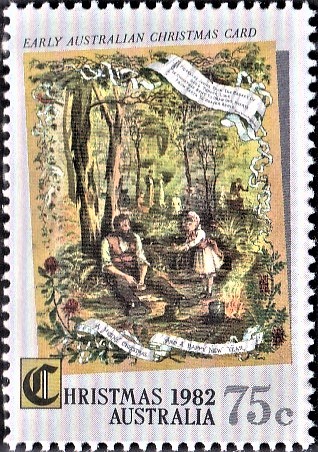
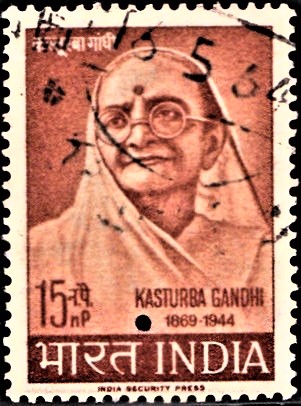
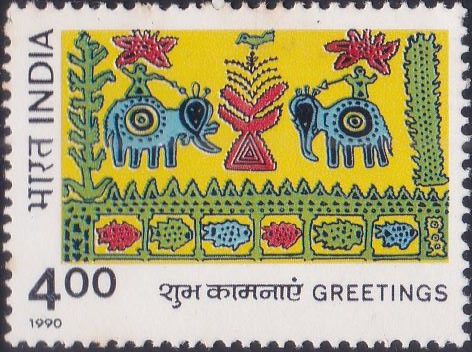
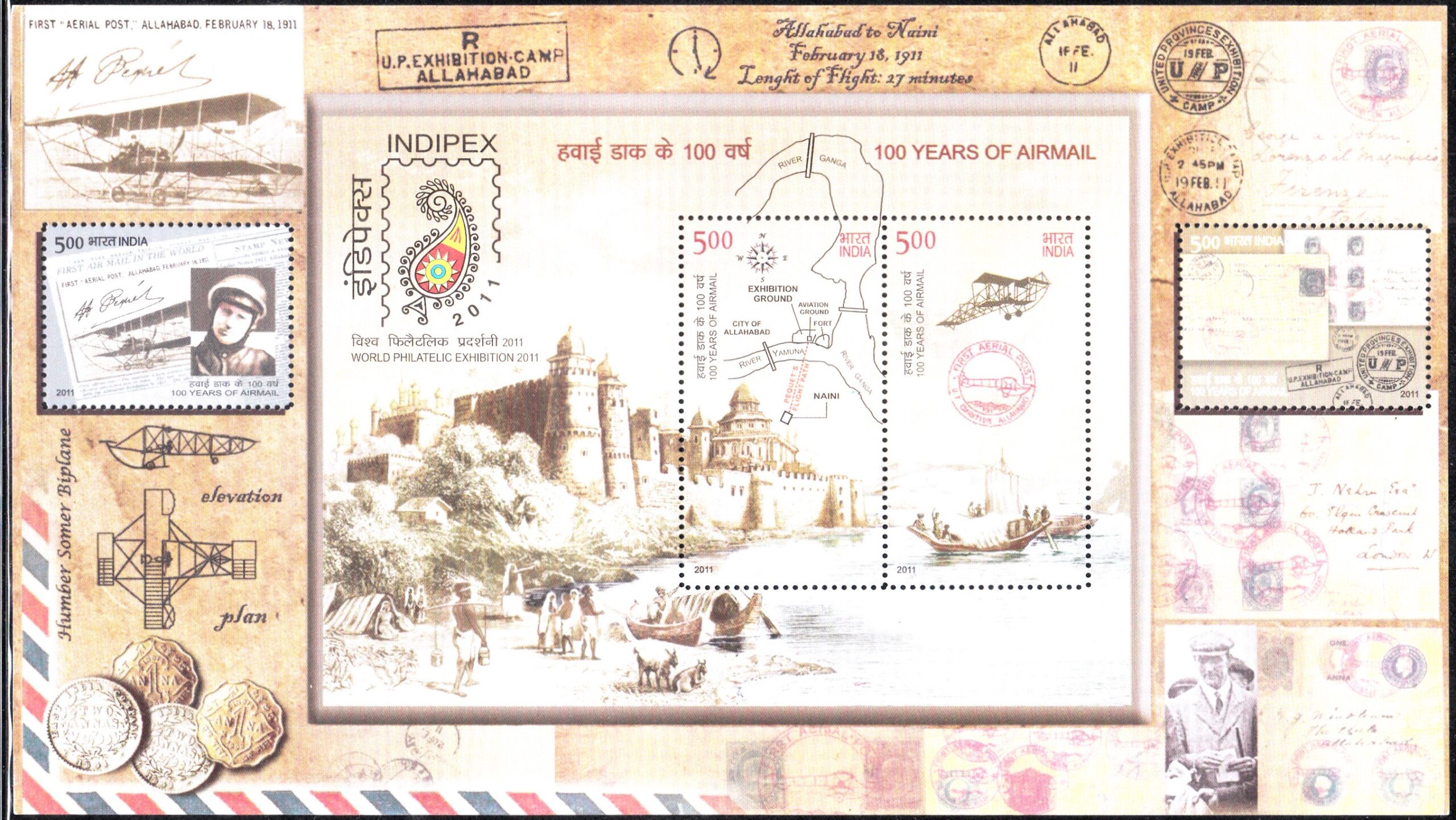
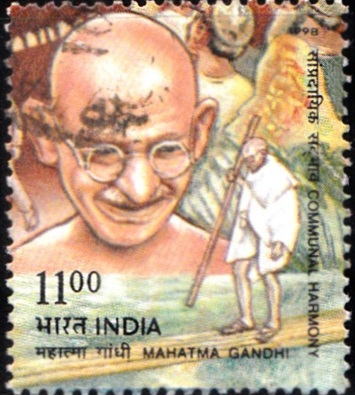

I get valuable knowledge on postcard history.